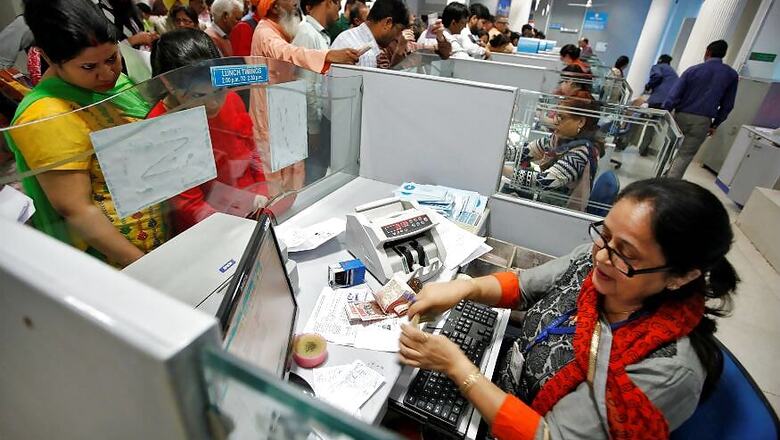
views
New Delhi: In an effort to consolidate the worsening public sector asset stress, the Centre on Monday decided to merge three state-owned banks — Vijaya Bank, Dena Bank and Bank of Baroda, giving birth to India’s third-largest lender.
Finance Minister Arun Jaitley along with financial services secretary Rajeev Kumar informed that the boards of the three banks will examine the amalgamation proposal.
In a country where a majority of the population falls in the vast expanse of "middle class", a bank is viewed as a safe treasury to store hard-earned cash. Therefore, any change in bank rules or procedure is viewed with utmost scrutiny.
As is the case now, when there isn’t a threat of a financial meltdown, typical bank mergers are the result of months of ongoing discussions before they are announced. In due course, banks notify customers of the changes (if any) that will occur.
Likewise, Jaitley in the news conference on Monday said, “No employee will face any service conditions which are adverse in nature. The best of the service conditions will apply to all of them.”
For customers, one of the immediate and encouraging outcome of the merger will be an additional access to a larger fleet of branches and ATMs. Furthermore, a bank merger means that one's bank accounts and their features may not remain as they were before the merger. Also, banks generally do not allow grandfathered accounts to be continued post the merger.
When banks merge, so do their customer deposits. If one happens to have a large amount of money in the two banks that are merging together, they are likely to find the entire money in the same bank, which defeats the purpose of splitting the sum in the first place.
Bank mergers can also lead to some customers switching to other banks. According to the 2017 Retail Banking Satisfaction Study by the global marketing firm JD Power, 46 percent of respondents whose banks went through a merger within the previous 12 months reported they would definitely switch banks.
But among retail banking customers whose banks merged one to three years prior to the survey, only 29 percent said they would move on.
An older study by the Deloitte Centre for Banking Solutions found that of those who did move to another lender, a surprising 36 percent said they did so for emotional reasons.
Meanwhile, other reforms introduced for clean banking include strict enforcement of conditions of loan sanctions, stressed asset vertical in banks, transparent recognition of NPAs, upfront provisioning for losses on NPAs, agenda for reforms, recalling of expensive AT1 bonds, rationalisation of overseas branches and effective management of operational risks, collection of past details of borrowers for loans of over Rs 50 crore.
Earlier, India had asked RBI to prepare a list of candidates for merger among 21 government-controlled lenders as it seeks to strengthen a banking system laden with bad debt. In a meeting in August, finance ministry officials also asked the Reserve Bank of India to suggest a time frame for the consolidation.



















Comments
0 comment